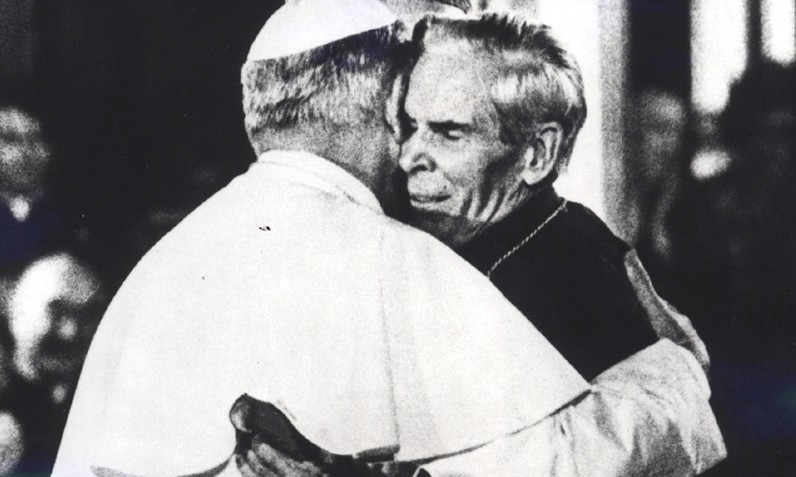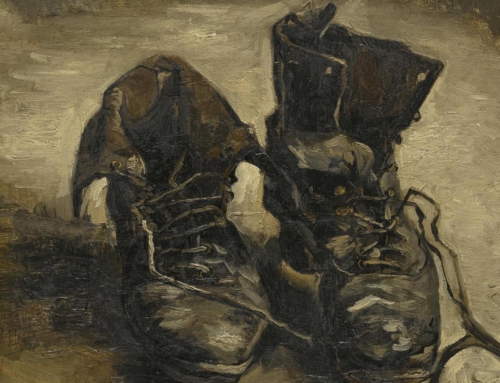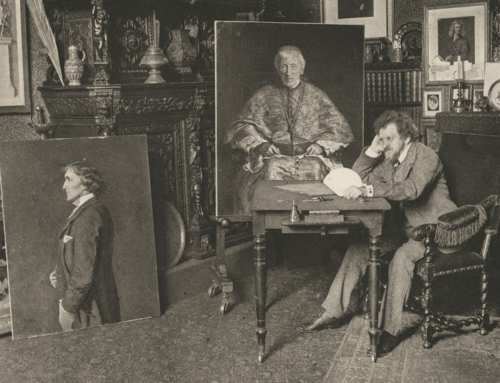This post is the third and final part of a series on Archbishop Fulton Sheen.
Archbishop Fulton Sheen was not just another televangelist in a long line of American religious personalities. His service to the Church was not simply to convince Americans that a man in a pectoral cross and ecclesiastical cape had something to say during the 8 p.m. Tuesday slot on CBS. He also aimed to show that Thomism could speak to a wide audience. While he may have delivered apologetics and sound moral wisdom to a wide populace, his presentations were sourced from a deep well of theological understanding. His priestly life was marked by devotional service to the truth and an ardent desire to share the fullness of truth with the world.
“There are two kinds of knowledge about Christ, speculative and practical; the former comes from study, the latter from prayer.”
Before he was a famed radio and television star, Fulton Sheen was a priest from Peoria who studied and taught philosophy and theology. With a doctorate in each discipline—the latter from the Angelicum, the Dominican University in Rome—the young Fr. Sheen was uniquely prepared to share the Gospel with a new generation. Ever a faithful Thomist, he desired to serve truth and communicate it effectively. For Fulton Sheen, service to truth meant prayer and arduous study—perfect Dominican ideals for a longtime friend of the Province of St. Joseph. He understood that study and prayer were not just aspects of seminary formation, but necessary components of any priestly life. Throughout his life, he maintained the practice of spending a daily hour in meditation and further time in reading and studying. The priest is not his own, and Fulton Sheen gave himself over to the truths of the Church, in order that She could use him in proclaiming the good news with the world.
“To save souls a priest must be holy; God does not use dirty tools.”
Fulton Sheen’s priestly life was a rather full one. He was a pastor, a professor, an author, a diocesan bishop, and a popular media figure. In each of these roles, he embraced the apostolate assigned to him. In order to faithfully carry out his work, he was committed to simply preaching the fullness of the Gospel. It wasn’t necessarily that he had great experiences that prepared him for certain roles, but rather that the rich interior life he lived enabled him to respond heroically to each new mission. God was the one who accomplished great work through His instrument, Fulton Sheen, who sought to make himself the most malleable and effective tool possible.
“Union with Christ, thinking and acting like Christ, does not come simply from ordination.”
Archbishop Sheen was convinced that there is an inherent integrity to the Catholic Faith. He preached the fullness of the Faith without fear or compromise. Trusting in the truth, he never shied away from difficult teachings or moral quandaries. While it is always a challenge to present that truth in an attractive and accessible manner, he was unparalleled in his ability to communicate the Thomistic synthesis by anecdote, image, and popular examples. He knew that to communicate truth, he himself had to know it first, and to cooperate in the salvation of souls, he first had to be a saint. This, through the grace of Christ and the mediation of His Mother, he did.
“Mary is the special mother of priests. Every priest at death wants to be laid in Mary’s arms as was Christ.”
✠
Editor’s note: In addition to this piece, we would also like to direct our readers to an interview posted by Catholic University, which offers further commentary on Fulton Sheen’s connection with Thomism. The speaker, Fr. James Brent, O.P., is a Dominican friar who teaches in the School of Philosophy at CUA.
✠
Above Image: Pope John Paul II embracing Archbishop Sheen (October 2, 1979). The meeting fell a few days before Sheen’s 60th anniversary of his priestly ordination. The pope said to him, “You have written and spoken well of the Lord Jesus Christ. You are a loyal son of the Church.”







